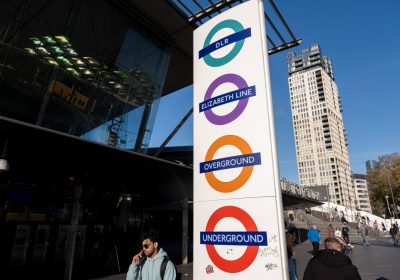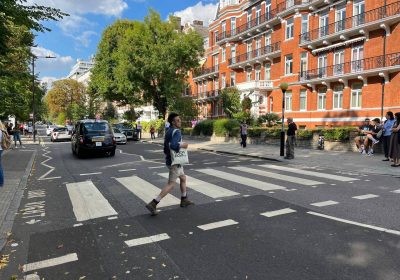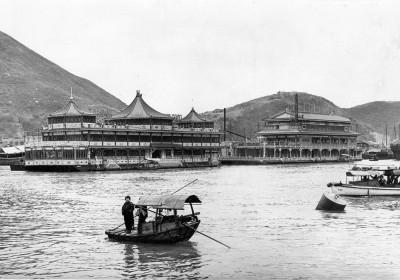
In the first and second part of my current series of articles, I have discussed the quintessence of six London tube lines and likened each of them to a piece of classical music. I am excited to continue this musical exploration of the underground network in the British capital. This week, I will turn my attention to the Northern and District Lines and explore their distinctive features and qualities.
Northern Line
When I first visited London as a child some twenty years ago, I was fascinated by the city’s Tube network and would constantly ask my parents to take me on the trains. Although I had a lot of fun travelling on most of the lines, I was always reluctant to board a Northern Line train. Once we were on a rush and had to get to Euston as quickly as possible to catch a train. Our hotel was in the London Bridge area and the Northern Line was the quickest, and also the only direct, way to travel. Whilst waiting on the platform, I became incredibly nervous and tense and was simply unwilling to step inside any carriage. My parents were rather confused and despite their cajoling me and promising to take me to my favourite shops, I was unmoved and insisted that we had to find another way to travel.
After taking a detour on the Jubilee and Victoria Lines, we reached Euston to find our train had already departed, which required us to wait two hours for the next one. Feeling rather guilty for ruining my parents’ holiday plans, I confessed to them my reasons for not being willing to travel on the Northern Line: my fear of ghosts. Before the Northern Line trains approached a platform, some intensely spooky and creepy sounds would appear out of the tunnels. I used to be so afraid and under the impression that there were ghosts in the Northern Line tunnels and that passengers would be transported to some underground complex if they were to board one of its trains.
My parents burst out laughing when they heard my explanation and they spent the rest of the day convincing me that not only were ghosts not real, but the Northern Line had also never had an accident in its history. Now whenever I had to travel on this eerie Tube line, I would always think of my childhood foolishness and how I was scared by non-existing supernatural beings. However, this is not to say that the scary noises have disappeared from the Northern Line tunnels. In fact, such disconcerting phenomena are actually well-documented on YouTube.
The Northern Line’s frightening sound qualities are akin to that of the second movement of Ludwig van Beethoven’s Piano Trio in D major, Op. 70 No. 1, now commonly known as the ‘Ghost Trio’. During the period when Beethoven was composing this work, he had also been in a discussion with the playwright Heinrich von Collin about Shakespeare’s play Macbeth. The second movement of the ‘Ghost Trio’, which gave this composition its nickname, was rumoured to represent a scene featuring the three witches. It begins with a few uncanny three-note patterns in the strings to which the piano responds mournfully. The work’s ominous and dark mood was depicted by Beethoven through his ingenious use of dynamics, chromaticism and tremolando techniques.
Perhaps on Halloween this year, buskers could consider playing Beethoven’s ‘Ghost Trio’ along some Northern Line platforms to add to the spine-chilling and unsettling atmosphere of the occasion…
District Line
I have made a habit of napping whenever I travel on the Tube. After all, are there better ways to wind away the time? Tube carriages are often too packed for anyone to read a book or work on a laptop, and certainly too noisy to hold a conversation, while the Wi-Fi underground is still highly sketchy so there is little point to try playing games or messaging on a smartphone. As far as I can recall, I have slept on almost every London Tube line, and if I believe my fellow travellers’ feedback, I have also snored on a good number of them. However, I would never dare to fall asleep on a District Line train. Instead, I am always vigilant and would do all I can to keep my body active, be it from eating, standing or even pinching myself.
For readers unfamiliar with the London Tube network, the District Line is the underground line with the most stations, with multiple termini on both the western and eastern ends. In the east, trains would regularly terminate at Tower Hill, Barking, Dagenham East or Upminster; in the west, there are five branches to Ealing Broadway, Richmond, Wimbledon, Kensington (Olympia) and Edgware Road.
What makes matters even more complicated is that the District Line trains would often change their destinations in the middle of a journey. For instance, a service that is initially scheduled to travel all the way to Upminster (Zone 6) could terminate early at Tower Hill (Zone 1). Similarly, even if ‘Ealing Broadway’ is shown at the front of the train, the service could still be diverted to Richmond or Wimbledon instead. As such, passengers often have to get off in the middle of their journey and figure out a new way to get to their destination, with confused tourists and exasperated Londoners being some of the most common sights on the District Line.
To paraphrase Forrest Gump, ‘Life is like the District Line, you never know what you’re going to get.’ Indeed, one must be prepared for all kinds of surprises whenever they travel on this line. A colleague of mine has even suggested that having a non-interrupted journey on the District Line is perhaps more unlikely than winning the lottery!
Having listed all these rather absurd characteristics of the District Line, I cannot help but to think of the second movement of Joseph Haydn’s Symphony No. 94, nicknamed ‘Surprise’. The surprise refers to the single very loud chord that takes place at the end of a quiet passage near the beginning of the second movement. Legend has it that Haydn inserted this feature into his symphony to awake members of the audience who might have fallen asleep in his concerts. The composer Adalbert Gyrowetz, who knew Haydn, even claimed that his esteemed colleague had actually intended to make the sleeping ladies jump!
The truth, however, was not so dramatic and Haydn was definitely not so mischievous. In fact, Haydn had simply wanted to surprise the public with something new and not be outshone by his pupil Ignaz Pleyel who, like his teacher, was also giving some concerts in London at the time. And to be fair, the ‘big bang’ at the beginning was not the only surprise in this movement. Haydn’s treatment of the thematic materials, creative variations and the almost-Romantic harmonies were all rather novel in the 1790s!














